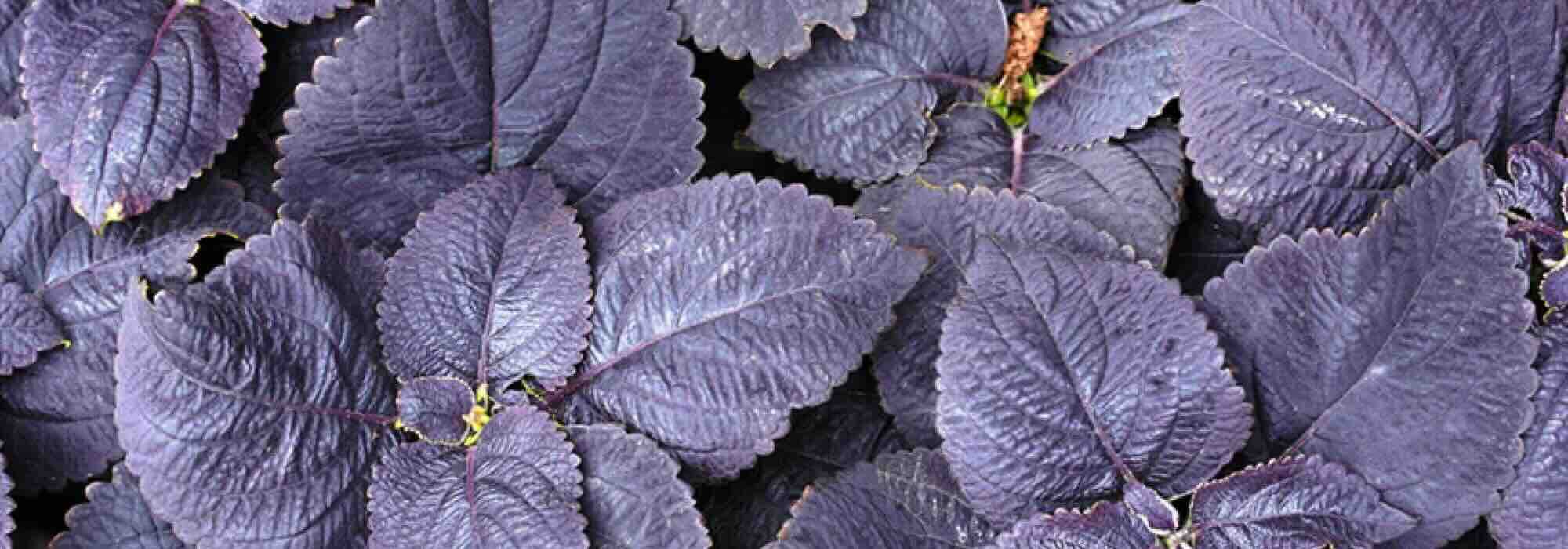
Purple foliage: annuals that electrify the garden
Our selection and advice
Contents
When we think of annual plants, we often imagine a fireworks display of colourful flowers. But foliage can also steal the show—especially when adorned with purple hues. Elegant, bold, sometimes almost mysterious, purple foliage adds real character to the garden.
Whether matte, velvety, glossy, or finely cut like lace, this type of foliage captures light in a unique way and creates stunning contrasts with classic green tones. Annual plants with purple foliage are as varied as they are easy to grow. They adapt to all styles, from modern gardens to more bohemian settings, and thrive equally well in pots or in the ground.
In this article, discover why these plants deserve a prime spot in your garden and which varieties to choose for guaranteed interest throughout the season.
Why choosing purple foliage?
Purple-leaved plants bring that certain something that makes all the difference in the garden. Unlike classic green foliage, their intense colour immediately catches the eye. In a flowerbed, planter or a simple pot on the terrace, they create contrast and highlight neighbouring plants.
Purple has the advantage of being both elegant and slightly mysterious. It adds depth to plant combinations, giving the impression of a richer, more structured garden. What’s more, these foliage plants remain decorative throughout the season, even when flowering becomes more discreet.
Another strength: their great adaptability. Purple foliage works just as well in a very graphic contemporary garden as in a more natural or romantic space. You just need to choose the right companion plants. And if you want to play the contrast card, nothing beats pairing them with golden or silver foliage or brightly coloured flowers.
Finally, adopting purple-leaved plants is also about stepping off the beaten track. It’s daring to use less conventional colours, adding character to your compositions and expressing your creativity.
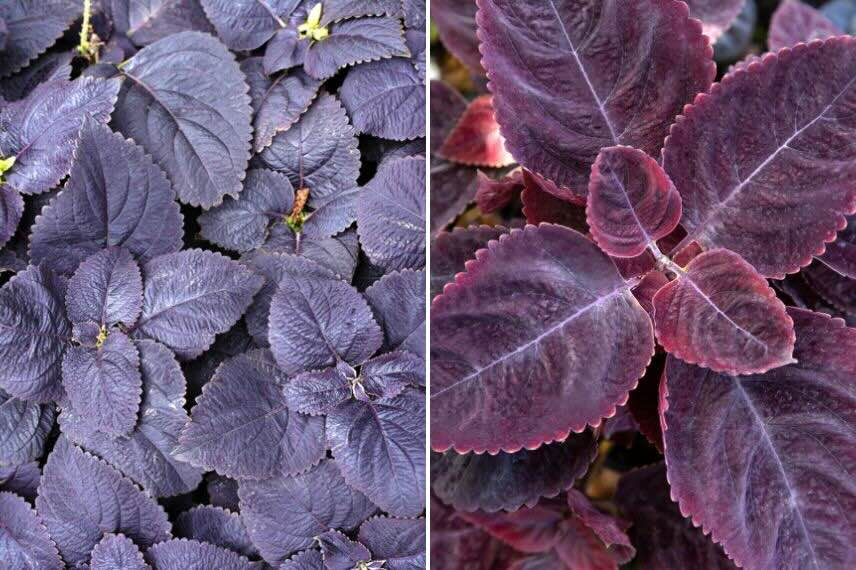
Two shades of purple among many others: Coleus ‘Palisandra’ and Coleus ‘Mezmerize Rusty Red’
The most beautiful purple-leafed annuals
Morning Glory: Ipomoea batatas ‘Sweetheart Jet Black’
This ornamental morning glory variety features heart-shaped foliage in such a deep purple that it appears almost black. The leaves grow up to 15 cm long. The plant has a compact to trailing habit, reaching a height of 20 to 40 cm and spreading 40 to 60 cm. It is ideal as ground cover or in hanging baskets, adding a dramatic touch to mixed plantings.
Amaranth: Amaranthus cruentus ‘Velvet Curtains’
The ‘Velvet Curtains’ amaranth is a vigorous annual distinguished by its upright, deep crimson plumes and intense purple, grey-tinged ovate foliage. It grows vertically in a bushy habit, reaching 1.2 m in height and 60 cm in width. Its feathery inflorescences and striking foliage add an exotic touch to borders and are also prized as cut flowers.
Coleus with purple foliage
Coleus are tender perennials with highly colourful foliage, ideal for partial shade in borders and beds, and can also be grown indoors for several years. They are also called Plectranthus or Solenostemon scutellaroides. Some feature purple foliage in varied shapes and shades, always very dramatic. Notable varieties include:
- ‘Mezmerize Rusty Red’ boasts richly textured leaves in deep rusty purple tones with slightly dentate edges.
- ‘Palisandra’ stands out with velvety, deep violet foliage, almost black, with an ovate shape and dentate edges.
- ‘Copinto Manhattan‘ features leaves in an ambiguous dark purple-chocolate hue with crenate edges.
These coleus typically reach 30 to 60 cm in height and similar spread, depending on growing conditions.
Purple Basil: Ocimum basilicum ‘Purple Ruffles’
This grand purple basil combines culinary utility with ornamental appeal thanks to its dark purple foliage. The ovate leaves measure about 5 cm long and are deeply cut. The plant forms a compact bush 30 to 45 cm tall and 15 to 20 cm wide. Beyond adding colour to the garden, its aromatic leaves enhance dishes with their distinctive flavour and beautiful hue, perfect in salads, Asian cuisine or soups.
Castor Bean: Ricinus communis ‘Honolulu’
The ‘Honolulu’ castor bean is a striking plant with deeply lobed, vibrant purple-red foliage. The palmate leaves can reach up to 30 cm in diameter. The plant itself grows 1.5 to 2 metres tall with a spread of 1 to 1.5 metres, creating a dramatic focal point in the garden.
Purple Fountain Grass: Pennisetum x advena ‘Rubrum’
This ornamental grass is prized for its arching reddish-purple leaves and feathery purple-pink inflorescences. It forms a graceful clump reaching 90 to 120 cm in height and about 60 to 90 cm in width. Perfect for adding movement and texture to borders, though it is frost-tender.
The ‘Purple Knight’ Alternanthera is a vigorous, lesser-known annual with dark purple, almost black foliage. The ovate leaves measure about 5 to 7 cm long. The plant forms a dense ground cover, reaching 30 to 45 cm in height and spreading 60 to 90 cm, ideal for borders or container arrangements.
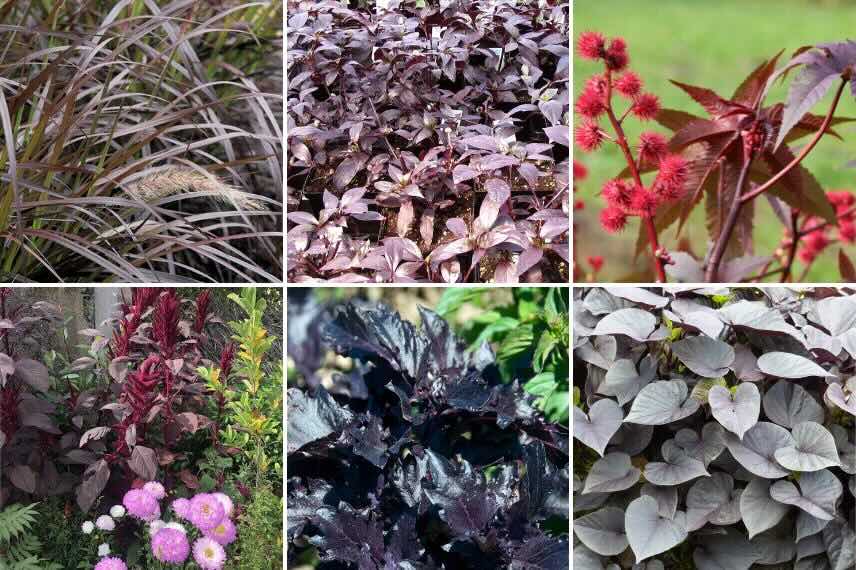
Clockwise from top: Pennisetum ‘Rubrum’, Alternanthera ‘Purple Knight’, Castor Bean ‘Honolulu’, Morning Glory ‘Jet Black’, Purple Basil ‘Purple Ruffles’, Amaranth ‘Velvet Curtains’
Growing and care tips
Annual plants (with purple foliage!) aren’t just beautiful: they’re generally easy to care for too. But to help them reach their full potential, a little extra attention makes all the difference. Here’s everything you need to know to keep them thriving and richly coloured all summer long.
The ideal exposure
Most of these plants enjoy sun or partial shade. Full sun often intensifies the purple hue of the foliage, but beware of heat stress for some varieties, like Coleus, which prefer softer, filtered light in the afternoon.
Well-drained soil, always
Whether planted in the ground or in pots, well-draining soil is essential. Roots dislike excess stagnant water. A good quality potting mix, enriched with compost or organic matter, gives them a strong start. For containers, don’t forget the drainage layer at the bottom (clay pebbles or gravel).
Regular but moderate watering
Consistent watering is important, especially for young plants or during heatwaves. But be careful: always let the growing medium dry out slightly between waterings. Too much water can lead to dull leaves or even disease. Ornamental grasses like Pennisetum are fairly drought-tolerant once established.
Overwintering? Not necessary
These beauties are annuals: they won’t survive winter. But some, like Coleus, can be propagated from cuttings at the end of the season and kept indoors to regrow the following spring. And if your Coleus are in pots, you can simply continue growing them as houseplants.
Ideas for plant combinations in the garden
Purple foliage is a powerful visual asset, but it’s when combined with other textures, shapes and colours that it truly reveals its full potential. Here are some ideas for creating vibrant, harmonious compositions, whether on a balcony, terrace or in a large garden.
With golden or silver foliage: the chic contrast
Pairing purple with golden yellow foliage (Coleus ‘Copito Caipirinha’) or silvery grey (Helichrysum petiolare or Artemisia) creates a striking, luminous contrast. This combination immediately catches the eye, perfect for terrace planters or entrance displays. The dark foliage highlights the lighter tones, and vice versa.
With warm-coloured flowers: the flamboyant effect
Red, orange, yellow… warm hues pair wonderfully with purple. Imagine a Ricin ‘Honolulu’ surrounded by orange zinnias or yellow rudbeckias: guaranteed sunset vibes! These combinations create an energetic, almost tropical garden.
With white or pastel flowers: for elegance
Deep purple foliage beautifully offsets the softness of white, cream or pale pink flowers. When paired with white impatiens, pink petunias or light verbenas, they create a delicate, romantic and very soothing atmosphere.
In planters or hanging baskets: texture and colour
Purple foliage is excellent for structuring container displays. Use taller varieties as background plants or trailing varieties for creeping effects. You can also create monochromatic planters using different shades of purple for a very designer look.
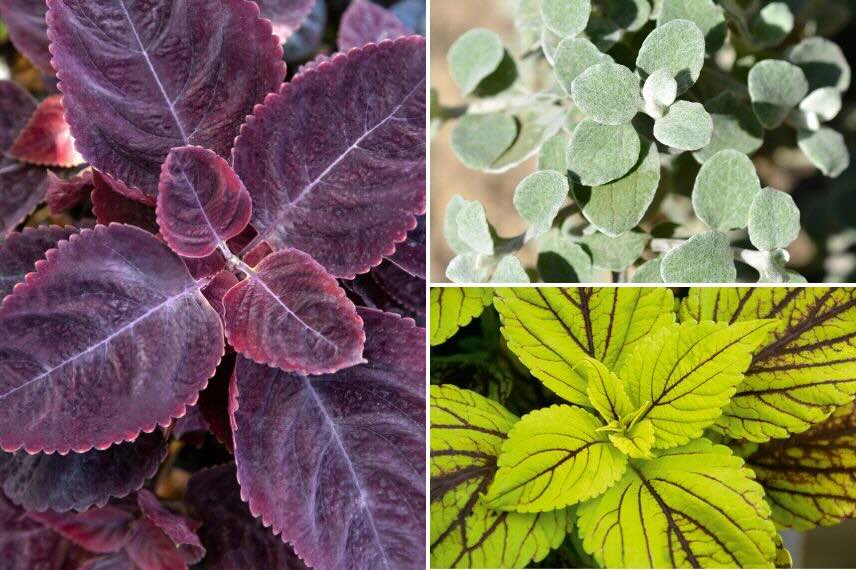
An association idea: purple Coleus, grey Helichrysum petiolare and golden Coleus ‘Caipirinha’
- Subscribe!
- Contents
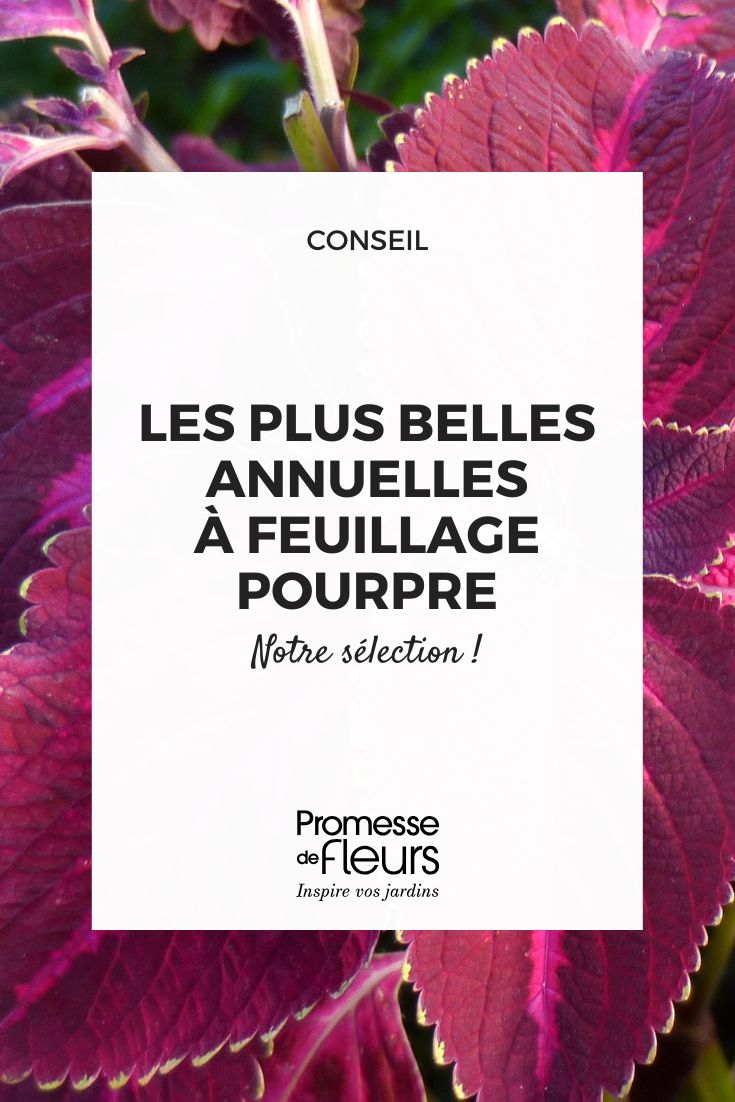































Comments